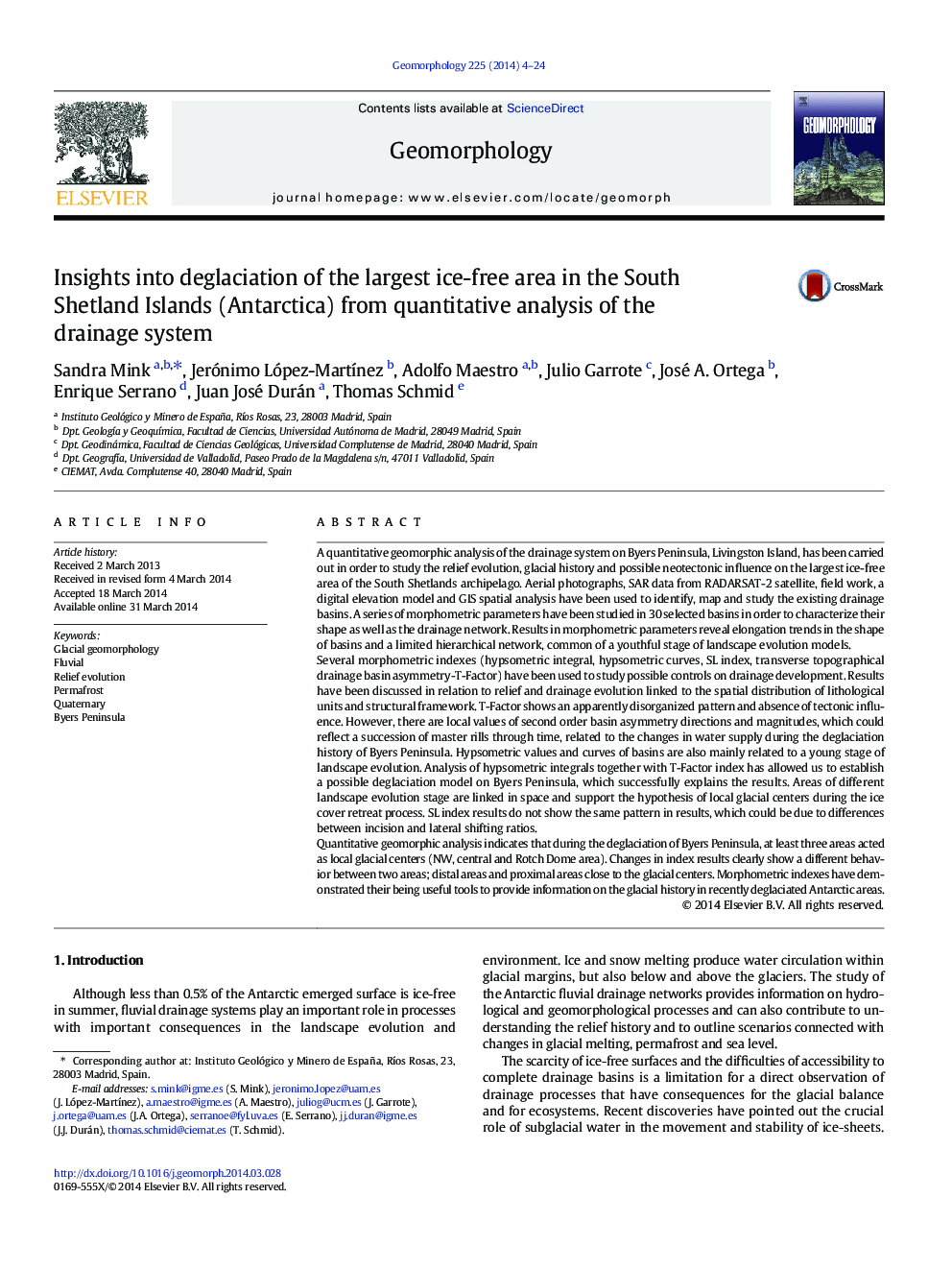| کد مقاله | کد نشریه | سال انتشار | مقاله انگلیسی | نسخه تمام متن |
|---|---|---|---|---|
| 4684463 | 1635424 | 2014 | 21 صفحه PDF | دانلود رایگان |
• Morphometric indexes are powerful tools to inform on deglaciation history.
• Asymmetry index and hypsometric integral provided clear evidences.
• Combined asymmetry–hypsometry analysis gave best evidence on ice retreat pattern.
• Drainage on Byers Peninsula is in an early stage of evolution.
• During deglaciation ice was reduced to three separated local masses.
A quantitative geomorphic analysis of the drainage system on Byers Peninsula, Livingston Island, has been carried out in order to study the relief evolution, glacial history and possible neotectonic influence on the largest ice-free area of the South Shetlands archipelago. Aerial photographs, SAR data from RADARSAT-2 satellite, field work, a digital elevation model and GIS spatial analysis have been used to identify, map and study the existing drainage basins. A series of morphometric parameters have been studied in 30 selected basins in order to characterize their shape as well as the drainage network. Results in morphometric parameters reveal elongation trends in the shape of basins and a limited hierarchical network, common of a youthful stage of landscape evolution models.Several morphometric indexes (hypsometric integral, hypsometric curves, SL index, transverse topographical drainage basin asymmetry-T-Factor) have been used to study possible controls on drainage development. Results have been discussed in relation to relief and drainage evolution linked to the spatial distribution of lithological units and structural framework. T-Factor shows an apparently disorganized pattern and absence of tectonic influence. However, there are local values of second order basin asymmetry directions and magnitudes, which could reflect a succession of master rills through time, related to the changes in water supply during the deglaciation history of Byers Peninsula. Hypsometric values and curves of basins are also mainly related to a young stage of landscape evolution. Analysis of hypsometric integrals together with T-Factor index has allowed us to establish a possible deglaciation model on Byers Peninsula, which successfully explains the results. Areas of different landscape evolution stage are linked in space and support the hypothesis of local glacial centers during the ice cover retreat process. SL index results do not show the same pattern in results, which could be due to differences between incision and lateral shifting ratios.Quantitative geomorphic analysis indicates that during the deglaciation of Byers Peninsula, at least three areas acted as local glacial centers (NW, central and Rotch Dome area). Changes in index results clearly show a different behavior between two areas; distal areas and proximal areas close to the glacial centers. Morphometric indexes have demonstrated their being useful tools to provide information on the glacial history in recently deglaciated Antarctic areas.
Journal: Geomorphology - Volume 225, 15 November 2014, Pages 4–24
